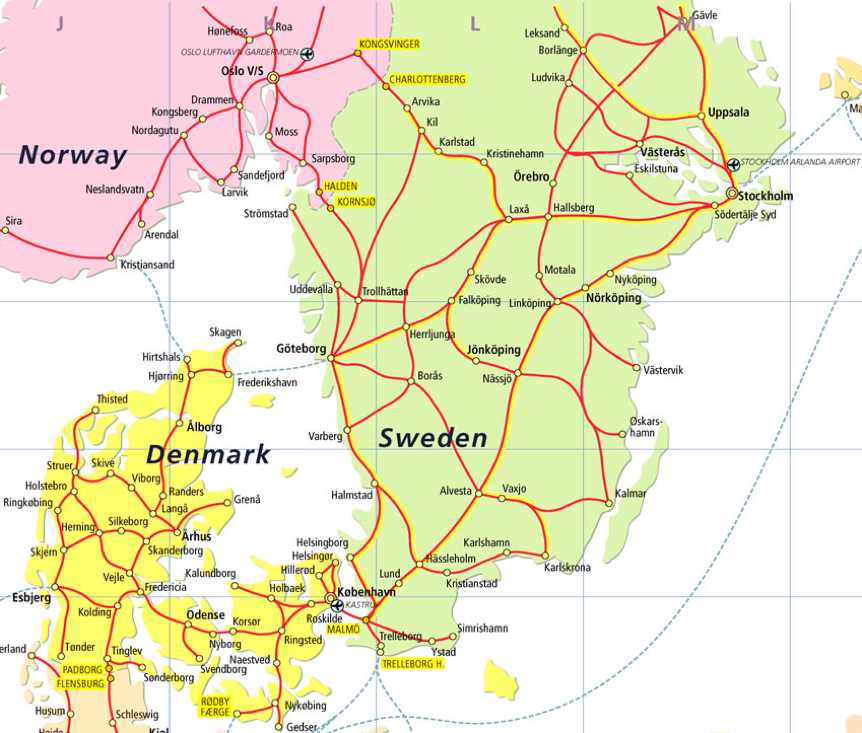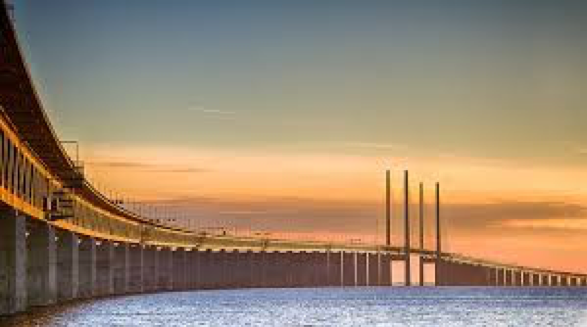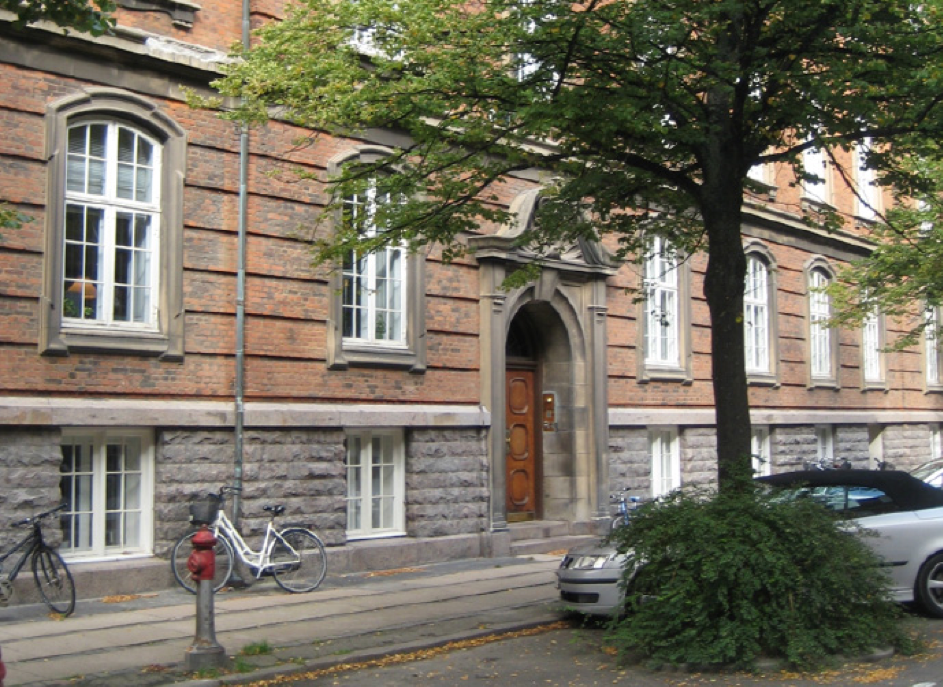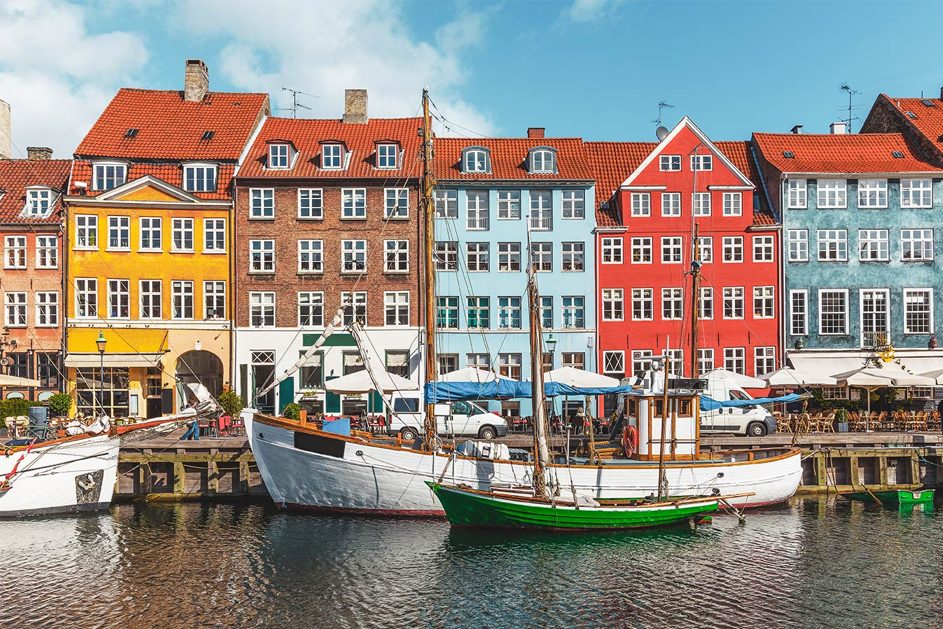Danish Psychoanalytic Society
http://www.psykoanalytisk-selskab.dk

Establishment
The first serious attempt to establish psychoanalysis in Denmark as part of the IPA was made in 1933. The Hungarian psychoanalyst George Gero was sent to Denmark with the intent to develop a master’s degree training program. However, the project was interrupted as he fled to the USA when Denmark was occupied by German troops in 1940.
In May 1933 Wilhelm Reich came to Denmark, fleeing from Germany and the Nazi persecution of Jews. He intended to establish himself as a psychoanalytic therapist and training analyst, but his legal status forced him to continue to Norway.
It took until the end of World War II before there was renewed attempts to establish psychoanalysis in Denmark. A psychoanalyst from the Swedish Psychoanalytic Society, Niels Nielsen, established himself in Copenhagen in 1949 and offered psychoanalytic training to qualified psychiatrists and psychologists. Thus, a small group of candidates could start their training. In 1951, the Danish psychiatrist Thorkil Vanggaard joined the group. He returned to Denmark after being trained in the US at the New York Psychoanalytical Society. In 1952 the group got yet another member, psychiatrist Erik Bjerg Hansen who had undergone psychoanalytic training in Vienna.
At the IPA Congress in London in 1953, the Danish group was accepted as a Study Group of the IPA under the sponsorship of the Swedish Society. Four years later, in 1957, the Danish group was accepted as Component Society of the IPA. By then the Society had 10 members and 6 associated members.
The newly formed Danish Psychoanalytical Society was well received in the international community and in both 1959 and 1967, it was honored with the task to arrange the International Congresses in Copenhagen.
Stagnation and growth
However, after this rather brilliant start, the Society showed poor ability to develop further. There was a long period with almost no influx, and through the 1960s the Society was in stagnation and threatening decline.
This trend could be reversed at the beginning of the 1970s, when efforts were made to develop the training program to make it up-to-date, and to stimulate people to go into training. In addition to this, the Society received help from other IPA Societies with the training of candidates and training-analysts and with contributions to the Societies scientific meetings. Another contributing factor came from the other side of the Strait of Oresund, from the southern part of Sweden.
The restarting of training in the Danish Society including Swedish candidates
At that time, there was a group of young psychiatrists and clinical psychologists in southernmost part of Sweden, in the county of Scania, who were in psychoanalysis and were eager to have psychoanalytic training. This part of Sweden, with the university town of Lund and the more commercial city of Malmoe, is situated 650 km from Stockholm and at that time, only 45 minutes by hydrofoil to the Danish capital Copenhagen. Today a bridge connecting Malmoe and Copenhagen has made the distance even shorter. In Stockholm, there was the Swedish Society and its Training Institute, to which they could apply for training, but they knew that there was also an IPA Society in Copenhagen, although their Training Institute was for different reasons not active.

The geographically close connection between Copenhagen and southern Sweden
One psychiatrist and one psychologist from this part of Sweden were already in training in Stockholm. But most of the group thought it would be more convenient to have their training in the geographically much closer Copenhagen.
Dr. Niels Nielsen, who was one of the founders of the Danish Society, had by now moved to Malmoe and was one of the two practicing psychoanalysts there. The group turned to dr. Nielsen asking for his assistance, which resulted in a meeting in the autumn of 1974 with professor Reimer Jensen, representing the Danish Society. A new training group consisting of both Danish and Swedish candidates started in the autumn of 1975. The society started to grow and by 1984 it had 26 members and 21 candidates.

The Oresund bridge connecting Copenhagen and Malmoe
The linking and the differences between Sweden and Denmark
For the Swedish candidates and eventually members, the step across the strait of Oresund was not without problems. The Swedish Society was hesitant to have Swedish psychoanalysts working in Sweden, neither trained in, nor members of the Swedish Society. From a professional and legal point of view Denmark and Sweden are quite different. This created an uncertainty concerning the Swedish candidates’ professional status in relation to the Swedish Society. It took almost 20 years to solve these problems. As a result, it is now possible for the Scandi members to choose to be member in both societies, the Danish and the Swedish or in only one of them.
During those years the Scanian candidates and psychoanalysts created a working group with the aim to work on these problems while at the same time arranging lectures and clinical seminars in southern Sweden, to which also the Danish colleagues were invited. As the Swedish working conditions for analysts were different from the Danish at that time, there was a need to discuss specific professional questions among the Scanians. Until this day the working group exists under the name of the Scanian Psychoanalytical Association, an association open for all analysts and candidates in Scania.
Today, the Swedish analysts who have remained members in the Danish Society, are fully integrated. They are represented in the board of the Society as well as in the Training Committee. Several chairmen of the Training Committee have been Swedish, and the presidency of the Society is at present for the second time held by a Swedish analyst.
Conflict and further development
In the late 1980s and early 1990s the society came into difficulties due to internal conflicts. It contributed to the society having three IPA Site Visits – in 1992, 1993 and 1994. The visits resulted in an improvement of the training and stimulated an intense internal work that went on for many years. The society managed to resolve the crisis and has since then been in a positive development with a good internal atmosphere among members and candidates.
Premises
Although the society continued to grow, it was still quite small in the early 1990s and had no premises of its own. Many of the training analysts were psychiatrists, working in Psychiatric Clinics, and all activities, including the theoretical seminars, took place either in a conference room of the psychiatric ward in one of the larger Copenhagen hospitals or, when there was a Swedish member teaching, in the private clinic of that member, in Malmoe or Lund.
A major change came when in 1997 the society, together with four practicing psychoanalysts, finally succeeded in renting a flat in a nineteenth century bourgeois building with a nice atmosphere and room for integrating library, theoretical seminars and scientific and social meetings. This flat is today still the premises of the society, which by now has 55 members and 18 candidates.

The entrance of the premises in Copenhagen.
Training
The training of the Danish Society follows the Eitingon model (4 times a week), with the overall aim being the formation of a psychoanalytic identity by integrating the experiences of the personal analysis with the systematic theoretical teaching and clinical work.
The training committee comprises Danish and Swedish members and, at present 4 of the 18 candidates are Swedish. Of 28 training analysts, 10 are from Sweden. The Society profit from close relationships with the other Nordic Societies in a tradition for including representatives from these societies when evaluating applicants for the training analyst function.
Most of today’s candidates are clinical psychologists, changes within psychiatric treatment having caused a decline in applications from psychiatrists. Outreach activities and introductory meetings have resonated with a broader range of academic professions, resulting in a growing interest from other faculties. As candidates nowadays are often younger and/or from other disciplines, their clinical experience varies, and a preparatory course in psychic disorders and clinical thinking is needed.
A four-year theoretical training is announced every second year. Recently the program has been expanded with an infant observation course and weekly clinical seminars, and we are ready to integrate a child and adolescent training with the regular training.
Before entering the theoretical seminars, candidates must have been in analysis for at least one and a half years. In principal it should be possible to qualify after 6-7 years of training, but in practice this is rarely the case. Maternity leave and difficulties in finding training cases are frequent reasons for delays. Recently a Process Coordinator function has been installed, with the aim to follow the progress of the candidate and to help overcome hindrances, all through the training.
Since long, the society invites experienced analysts from abroad to hold regular clinical seminars, four times yearly, for a period of 3-4 years. These are mandatory for candidates and appreciated for offering an outside perspective on their clinical work.
Today, psychoanalytic training encounters many challenges. The Training Committee is concerned how to protect psychoanalysis against the pressure to reduce the high demands of the training, while at the same time inspire and attract professionals who are exposed to the short-comings of public health service request for brief treatments, offered by alternative therapies. Hopefully, experience from our participation in the on-going, two-year trial period of the Exchange Visit Program (EVP) in Europe, will stimulate reflections on how to move forward in maintaining and developing a high standard of training, on which the future of our psychoanalytic profession depends.
Scientific Meetings and Outreach
The Danish Society has a scientific program for members and candidates, comprising around 15-20 yearly meetings with a variety of lectures by members or guests, discussion meetings, film presentations, candidates presenting their Membership papers and clinical seminars with analysts from abroad.
The Society is constantly working on doing outreach work to the public in both Denmark and southern Sweden. We arrange lectures in a series called Psychoanalytic Debate, once or twice a year. We have recently started a Freud’s café, and some of the members are connected to Copenhagen University, doing a lot of outreach work among students. Some members are offering nationwide courses for professionals in psychoanalytic concepts, diagnosis, supervision, and other topics. We have a Web-page and a page on Facebook.
In connection with the Society, a number of members are engaged in a 3-year psychotherapy training program, given to qualified professionals not in psychoanalytic training. This program is organized as an independent institute, but all teachers, supervisors and therapists are members of the Danish Society. Some students in this training program continue into psychoanalytic training after finishing their psychotherapy training.
Nordic cooperation
There are close relationships between the Nordic Societies (Denmark, Sweden, Norway and Finland). This has deep historical roots, with these countries being united, disunited and in many other ways affiliated for centuries. The languages (except Finnish) are similar and the cultures share many basic features. Together with the Swedish, the Norwegian and the Finnish Societies we arrange a four day long Nordic Psychoanalytic Congress every second year. The responsibility and work to arrange these congresses rotates between the four societies, and in 2020, the Danish Society will arrange the next Nordic Congress, which, as a token of the Danish-Swedish character of the Danish Society, for the second time will be held in Malmoe in southern Sweden. These congresses take part in early August and gather around 200 participants from all Nordic countries, members and candidates. They are much appreciated for their familiar and friendly atmosphere.

View from Copenhagen
Another joint project between the four Nordic countries is The Scandinavian Psychoanalytic Review. The SPR is a scientific journal, represented in the PEP-Web, publishing psychoanalytic articles in English. Its editorial board comprises of one representative from each of the Nordic Societies, and the position of Editor-in-Chief rotates between the countries. At present, the representative from the Danish Society is Editor-in-Chief of the journal.
Written by:
John Vitger, training and supervising analyst of the Danish Society, former president
Stefan Bálint, training and supervising analyst of the Danish and Swedish Societies, former president.
Marie-Ange Wagtmann, training and supervising analyst of the Danish Society, Director of Training.
Maria Fitger, training and supervising analyst of the Danish Society and member of the Swedish Society, current president.